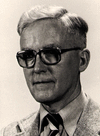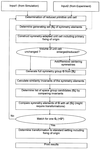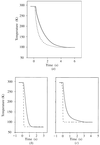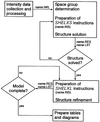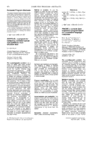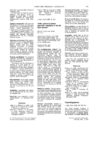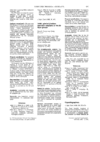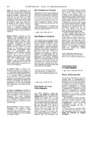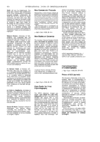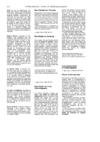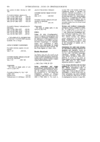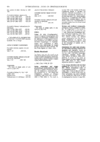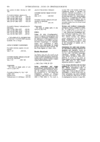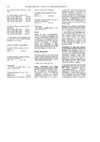issue contents
December 1998 issue

Cover illustration: Powder diffraction pattern of LaB6 obtained using a 200 × 400 mm flat imaging plate mounted at an angle of 45° with the incoming X-ray beam. Experimental conditions: ![[lambda]](/logos/entities/lambda_rmgif.gif) = 0.8884 Å, D0 = 104 mm, exposure time 60 s. Courtesy of Poul Norby.
= 0.8884 Å, D0 = 104 mm, exposure time 60 s. Courtesy of Poul Norby.
obituaries
Free 

research papers
A new expression of the X-ray incidence parameter is derived in order to evaluate the lattice strain by high-resolution X-ray diffraction rocking curves of heterostructures made of materials with different crystallographic symmetry. In particular, high-Tc perovskite superconductors deposited on substrates of cubic symmetry are considered.
The thermal and cold neutron transmission characteristics of high-grade single-crystal sapphire show negligible degradation after irradiation. The results are analyzed in terms of single-photon scattering. Poorer grade sapphire has similar properties.
By reducing most of the single-photon scattering, a liquid-nitrogen-cooled single-crystal magnesium oxide filter has thermal and cold neutron transmission characteristics superior to those of room-temperature single-crystal sapphire.
A combination of X-ray diffraction and molecular-mechanics simulations in the Cerius2 modelling environment has been used in the structure analysis of α-zirconium phosphate intercalated with ethanol.
The theory is developed for generating the aberration profiles for axial divergence in a conventional diffractometer in terms of the dimensions of the X-ray source, the sample, the receiving slit and the Soller slits in the incident and/or diffracted beams.
Profiles for a conventional powder diffractometer are generated and fitted using a fundamental-parameters approach which incorporates an accurate axial divergence function. The fit and the self-consistency of the approach are evaluated for different instrument configurations and a range of reference samples.
Microcrystals of cardiolipin (tetraacyldiphosphatidylglycerol) prepared according to different procedures have been studied by transmission electron microscopy and selected-area electron diffraction. The radiation damage has been assessed.
The refinement of powder diffraction data of partly crystalline organic compounds is described. Calculation of the structural data was performed using a Rietveld algorithm, taking the results of other methods into consideration.
Small-angle X-ray scattering is combined with simultaneous rheology to yield a wealth of information on the effect of shear on block copolymer melts and gels. The focus is on cubic micellar phases formed by amphiphilic block copolymers.
X-ray absorption near-edge structure (XANES) spectra taken at the Al K edge on a pure synthetic α-Al2O3 sample, a natural corundum (ruby/sapphire), and five artificial alumina made for abrasives have been interpreted quantitatively on the basis of difference spectra. Three of the artificial alumina contain β-Al2O3 as an admixed phase, the tetrahedral Al of which interferes with the predominant octahedral Al, while ruby/sapphire and the remaining two artificial alumina are very pure α-phases with minor substitutions of foreign atoms for their octahedral Al.
A simulation program for macromolecular diffraction patterns is presented which considers all essential parameters of the source, the sample and the detector. Tests and possible applications of the program are described.
Why do the current crystallite models show a larger intensity in the small-angle region than the experimental values? This paper attempts to answer this question by providing a new model of the stacking structure of disordered carbon layers.
An accurate structure analysis of a spherical LaB6 single crystal has been performed with the use of short-wavelength X-rays (WKα1) in order to estimate the termination effect in Fourier synthesis on the electron-density distribution (EDD). It is concluded that the effect on the EDD is negligible if data are taken up to  Å−1, because the negative values disappear completely from the map.
Å−1, because the negative values disappear completely from the map.
Two algorithms are presented that determine the translational symmetry (TRS) and space group (RGS) of a crystal structure, both for synthesized compounds and computer-generated structures.
A method that allows the calculation of single-crystal elastic constants from the diffraction elastic constants is presented. Values for the diffraction elastic constants have been obtained from diffraction measurements on polycrystals.
An X-ray tube with a focal spot diameter between 10 and 20 µm is described which can be operated at about 20 W and which is used with ellipsoidal focusing mirrors to deliver an intensity at the sample that is comparable with the intensity achieved with rotating-anode generators and non-focusing collimators.
cryocrystallography papers
A technique for direct cooling of crystals in liquid nitrogen has been developed. A set of implements has been designed and tested.
Cooling rates in liquid nitrogen, liquid propane and nitrogen gas have been compared. Liquid nitrogen affords the most rapid cooling, nitrogen gas the slowest.
short communications
Silver behenate powder (AgBE), one of the very few materials featuring Bragg reflections in the angular range accessible to small-angle neutron scattering (SANS) instruments, is suggested as a possible new wavelength calibration standard.
Two new and two renewed procedures for structure determination based on symmetry minimum and/or superposition functions were applied to equal-atom structures. Fourier recycling is able to extract structure from noisy superposition maps.
computer programs
A graphical computer program for the preparation of SHELXL instruction files is described.
CIF applications
Free 

A software package has been developed to read user-specified data from a CIF with a single C or Fortran function call. This approach involves simple additions to a CIF dictionary and significantly reduces the effort involved in creating a CIF interface. The procedure is applicable to both DDL1 and DDL2 dictionaries.
laboratory notes
A simple device for preparation of Guinier–Hägg-camera samples and easy filling of capillary tubes is described.
A simple and inexpensive system for producing video images of collimated X-ray beams is described and is suitable for use as an alignment tool.
computer program abstracts
A command interpreter for instrument control with macro file input is described. It is flexible, extensible and portable and a wide variety of experimental areas are supported.
General position/symmetry diagrams of the 80 layer groups are available in VRML format for viewing on a World Wide Web browser with a VRML viewer plug-in.
crystallographers
Free 

new commercial products
international union of crystallography
Free 

books received
Free 

Free 

Free 

Free 



 journal menu
journal menu









